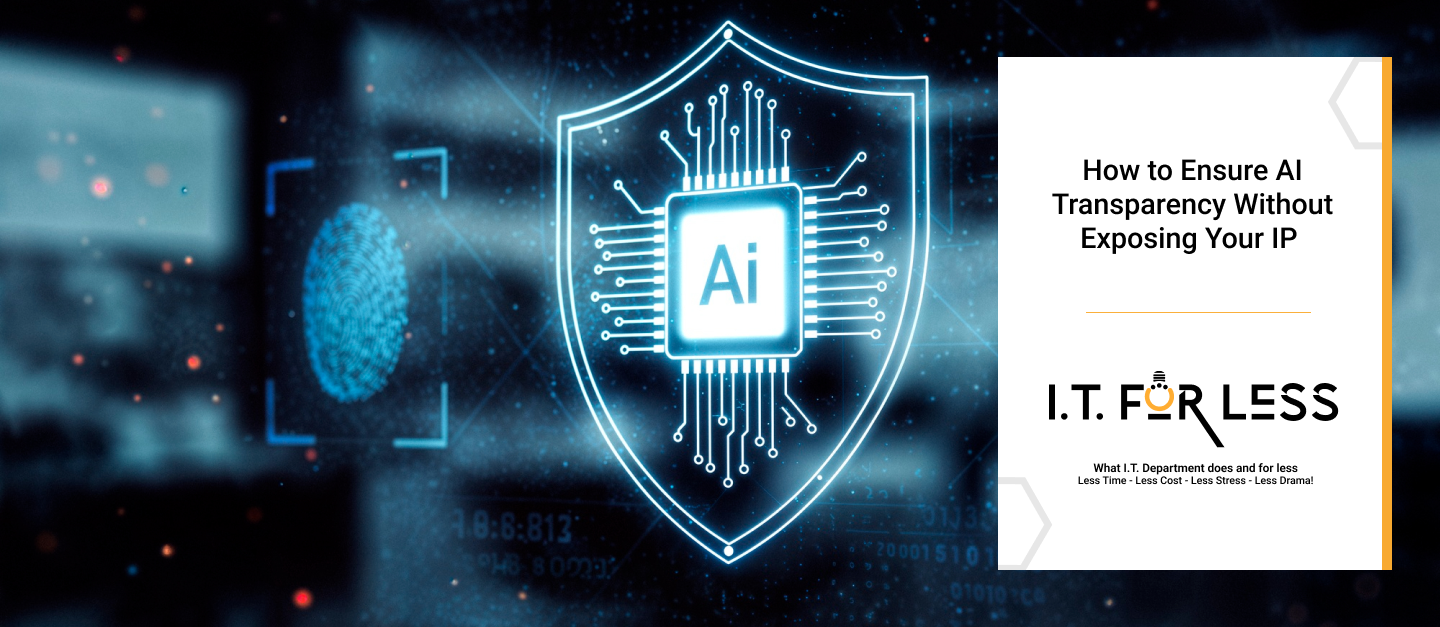As artificial intelligence becomes a cornerstone of business operations, transparency has become a regulatory and ethical necessity. Customers, partners, and regulators want to understand how AI systems make decisions. At the same time, organizations must protect their intellectual property (IP), trade secrets, and competitive algorithms. The challenge for modern enterprises is clear: how can you be transparent enough to build trust without revealing proprietary models or data? You must figure out how to ensure AI transparency without exposing your IP in the process.
The Transparency–Protection Dilemma
Transparency demands openness about how AI works — including what data it uses, how it’s trained, and how its outputs are generated. Yet, too much disclosure can expose valuable intellectual property. This allows competitors to replicate or exploit your innovation. The key lies in balancing responsibility with confidentiality. Organizations must design explainable systems that offer clarity on process and outcomes. This should be done without exposing sensitive code or model architecture. The question is, how can you ensure AI transparency while safeguarding your IP?
Building Explainability Without Revealing Secrets
AI explainability doesn’t require full access to your source code. Instead, it’s about offering clear, understandable explanations of model behavior and decision logic. Techniques such as model-agnostic interpretability tools (like LIME or SHAP) allow teams to explain results in plain language. This keeps the underlying model proprietary. It’s crucial to ensure transparency in your AI without compromising your IP.
Documentation is also essential. Providing summaries of training data types, bias mitigation methods, and validation processes demonstrates accountability without compromising intellectual property. Regular performance reports can show stakeholders that fairness, accuracy, and compliance are being actively managed — no code disclosure needed.
Governance as a Safeguard
Establishing an AI governance framework helps formalize this balance. Governance policies can define what level of transparency is shared externally versus internally. They also define how audit trails are maintained, and who has access to sensitive data. By setting structured boundaries, companies can stay compliant with global regulations like the EU AI Act. They can also adhere to NIST AI guidelines while still protecting their proprietary assets. Ensuring AI transparency is possible without exposing your IP if a robust governance framework is in place.
Cross-functional oversight — involving legal, IT, compliance, and data science teams — ensures that transparency decisions are strategic, not reactive. This collaborative model keeps ethical standards intact without risking innovation leaks.
Trust Without Trade-Offs
The most successful organizations are proving that transparency and confidentiality can coexist. When businesses provide clear, honest communication about how AI decisions are made — supported by evidence of fairness, governance, and accountability — they build trust with customers and regulators. They achieve this while preserving their competitive edge. It’s achievable to ensure AI transparency without fear of exposing your IP.
Responsible transparency doesn’t mean giving everything away. It means showing enough to prove that your AI systems are ethical, explainable, and secure.
Partner for Secure, Transparent Innovation
Partner with I.T. For Less today. Take the first step toward building transparent, compliant AI systems that protect both your innovation and your reputation. Keep your IT flowing as effortlessly as your ambition. Learn how to ensure AI transparency without exposing your valuable IP.
